Tag: Welding Courses
A Day in the Life of an Apprentice Boilermaker After a Welder Diploma Program
February 10, 2023
Boilers are large pressure vessels that create steam for energy. This energy is used to create paper, process foods, and generate electricity. Specialized welding skills are needed for the construction, installation, maintenance, and repair of boilers, and if you’re considering welding training, a boilermaker role could be a good option. After completing a reputable welding program, you’ll need to finish an apprenticeship program, where you’ll hone your skills and make the professional connections needed to launch your career as a journeyman boilermaker.
Typically, Canadian apprenticeship programs last a total of 3 years. They usually occur in 12-month stretches between in-cass instruction periods. Students value apprenticeships because they offer them the perfect opportunity to gain hands-on experience and earn money simultaneously. Read on to learn what it might be like to complete a boilermaker apprenticeship.
Start With Safety Measures After a Welder Diploma Program
As with all occupations in the trades, boilermakers must prioritize their safety. The beginning of your day as an apprentice boilermaker is the perfect time to ensure that you’re wearing the proper personal protective equipment and that your environment is safe. Your role can expose you to several hazards, such as flying objects, dust, splashed acid, sharp objects, the sun, and heavy machinery, which can harm your eyes, head, feet, respiratory system, and skin. After completing your welder diploma program, ensure that you wear eye protection, grade 1 protective footwear, sun protection, air-purifying respirators, and high-visibility clothing. Additionally, make sure that you’re provided with a safety harness when you’re working at heights.
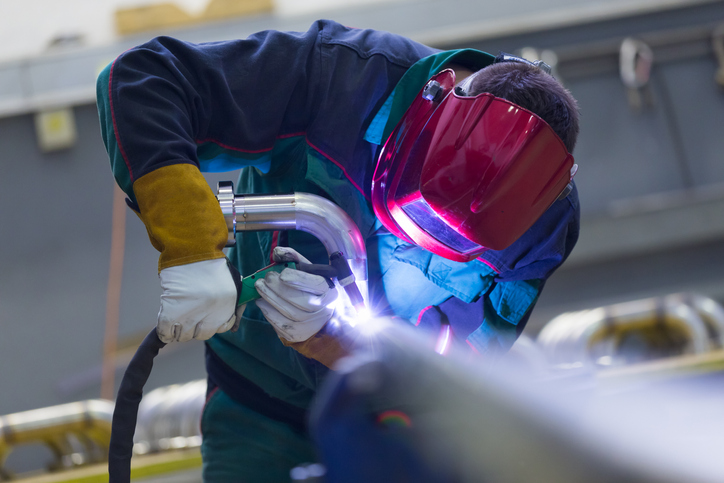
Aid the Construction and Installation of Boilers
One of your principal learning objectives as a boilermaker apprentice is the construction and installation of boilers. These duties require several skills that you’ll have plenty of opportunities to practice throughout your apprenticeship. Some of these skills include blueprint reading, cutting metal, fitting and welding metal together, and directing crane operators during installation and repair. After welding technician courses, you will often begin by shadowing and assisting. With time and experience you’ll be able to complete these basic boilermaker duties all on your own. In addition to construction and installation, maintenance will be another important aspect of your work as a boilermaker apprentice.
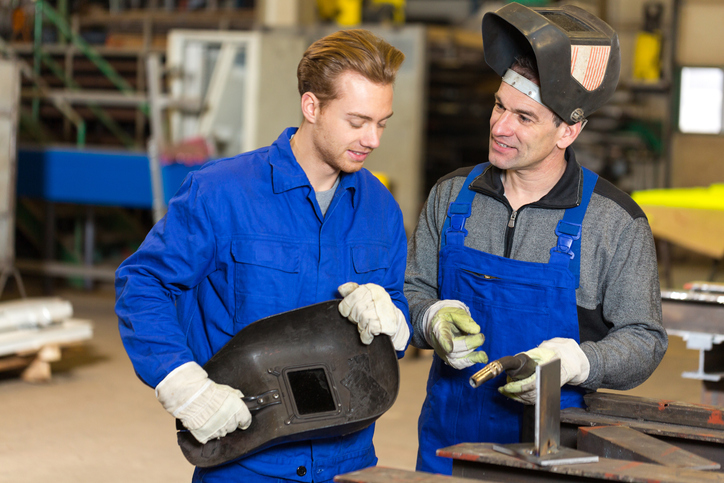
Apprentices Keep Boilers Clean as a Maintenance Practice
Boiler cleaning improves the performance of the machine. By removing limescale and soot buildup, you’re preventing heat loss, which reduces downtime for the boiler and extends its lifespan. This is a cost-effective practice that makes your role valuable to companies that save significant sums of money with your services. As a boilermaker apprentice, you will learn to conduct regular visual inspections, test the effectiveness of a boiler to determine whether it needs maintenance or replacement, and clean boilers. You will likely use cleaning solvents, scrapers, and wire brushes to complete this task.
Learn the fundamentals of welding in our state-of-the-industry facility and start your successful boilermaker career with us.
Are you ready to begin welding courses?
Contact NATS to learn how you can get started.
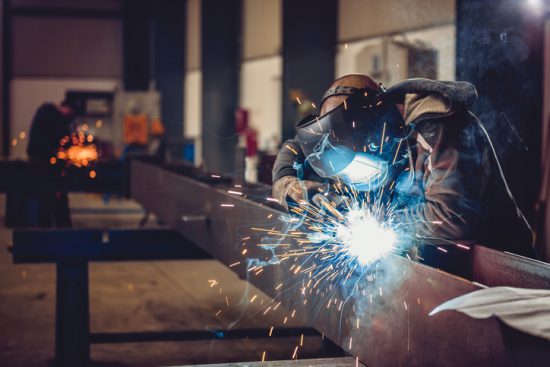
After building industry skills and expertise during your welding training, there’s only one thing between you and a successful career as a professional welding technician. It all comes down to the interview. Performing well in an interview will show a potential employer that you’re not only a qualified candidate for the respective position, but also that you have what it takes to succeed as a welder. While the interview process might seem intimidating at first, when you take the proper steps to prepare for this important meeting, you’ll be sure to succeed. Below, discover five different tips for a successful interview.
1. If You’re Seeking a Welding Career, Research the Company Before the Interview
While some welding skills and processes might be universal, the fact remains that no employer is the same. There are a variety of companies within many different industries, which require skilled welding technicians to perform certain tasks. When preparing for an interview, it’s important to conduct research on the company you’re interviewing with, as well as the position you’ll be applying for. After your welding technician training, conducting this research prior to the interview will ensure that you’re prepared to describe to an employer why you’re a good fit for the position in question. Additionally, you’ll be prepared for any questions that an interviewer might ask you regarding what you know about their company.

2. Make Sure You Dress for Success
If you’re seeking a career as a welder, it will be important to dress appropriately before arriving at any interview. Within the welding industry, it’s typically standard to dress as you would for a welding job. Attire such as a long sleeve shirt, work boots, and jeans are all acceptable to wear for an interview. Additionally, you might want to bring along some basic welding tools and safety equipment, as you may be asked to perform a bench test or other welding procedures for your interviewer.
3. Be Prepared to Answer Questions About Yourself
While your interviewer will want to ensure that you have the necessary skills to succeed in the role in question, they’ll also want to know who you’ll be as an employee. Thus, during an interview for any welding career, you can expect some questions about your motivations for entering the welding industry, as well as your strengths as a welder. Preparing answers to questions like these will help you to show an interviewer who you are as a welder, and what benefits you’ll bring to their company if you’re hired for the position.

4. Demonstrate Your Credentials
In any job interview, it’s important to be prepared to demonstrate your credentials to your potential employer. You’ll want to bring your resume in paper form, as well as proof of your completion of a welding training program. If you have a relevant welding certification, you should also bring this along to an interview. Once your interviewer sees that you’ve completed the required training, they’ll be secure in the knowledge that you have what it takes to succeed.
5. Prepare Questions for Your Interviewer
Last but not least, never show up for an interview without at least a few questions prepared for your employer. In order to come up with your questions, you can use the research you’ve conducted about the employer you’re interviewing with, as well as the job description. An example could be asking the employer what a regular work day would look like at their company. When you ask questions during an interview, your interviewer will know that you’re taking this opportunity seriously, as you’ve taken the time to engage in critical thinking about the position at hand.
Ready to enrol in welding courses?
Launch a successful career with a welding program at the North American Trade Schools.

If you’re pursuing training in welding, know that there are a range of opportunities that await you in the industry today. Boilermaking, jewel and stonework, plumbing, and transportation assembly are just a few of the common options in this trade. The job market for skilled welders is expanding and now spans a wide range of manufacturing sectors. If you’re looking for a diverse, creative and manually-intensive career, welding offers rewarding prospects.
A great welding program will include both theoretical and hands-on training. Trainee welders can expect to learn about the modern methods and uses of welding, and be ready to apply them to an industry-grade job upon graduating.
To understand more about your options, let’s take a look at 4 surprising facts about this skill.
1. There Are Many Different Types of Welding
As a trainee welder, you’ll practice using a number of different methods. For those without any prior knowledge of the trade, welding school offers comprehensive training to
get you to grips with the mechanics of welding. Welding courses will familiarize you with modern equipment used across different processes to prepare you for practical industry work. At the North American Trade School (NATS), students gain both theoretical and hands-on understanding of major welding methods. These include Gas Metal Arc Welding, Gas Tungsten Arc Welding, Flux Cored Arc Welding, and Shielded Metal Arc Welding. Upon graduating, students often have the chance to apply this knowledge to an apprenticeship as an ironworker, pipefitter, and more.

2. Welding Teaches You Many Different Lessons
As a welder, you’ll master more than just manual and technical skills. It is a trade that teaches resilience, creativity, and organization when working in different settings. Welders are often exposed to smoke, heat, and other harsh substances in their work, while using technical equipment such as drills and grinders. Precision, stamina, and awareness of your surroundings are invaluable skills in this trade. In the NATS welder program, courses cover more than the basics of equipment and the processes of welding joints together. Students also learn the fundamentals of creating a safe working environment, and how to identify and control hazards in welding.
3. Most Man-Made Substances Involve Welding
Over 50% of man-made products today are constructed using welding. From large-scale industrial equipment to automobiles, to personal computers, welding techniques are used in most manufacturing processes. At our NATS welding program, practical lab training teaches students the techniques essential to real-life productions. Over a 55-week program, students at NATS have plenty of access to on-campus labs. Here, they’ll gain first-hand experience of modern equipment, and be ready to apply that knowledge to work in their field. Courses at NATS also teach students how to decipher welding symbols on blueprints and apply basic math to perceive volume, area, and effective part layout.
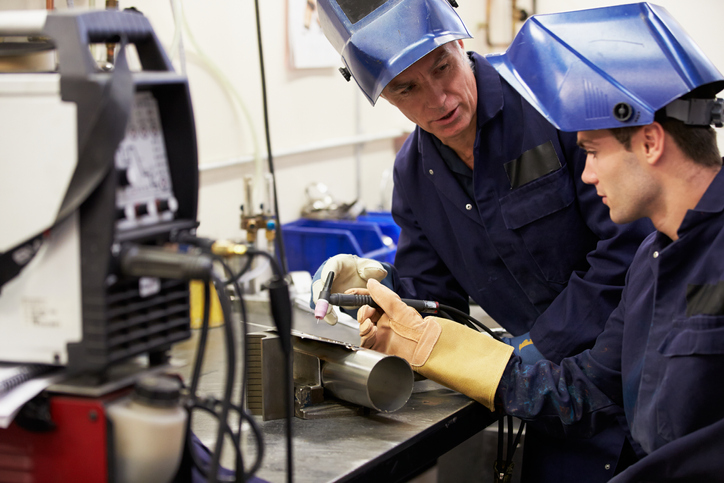
4. Welding Opens The Doors To Many Career Paths
Welding is a skill you can utilize across many different industries. Technological devices, transport links, and other industrial equipment all require welding to function. Welders can apply their skills to finish making popular consumer items such as toys, computers, and electronic devices. As such, modern production companies have an ever-growing demand for skilled welders. After completing an apprenticeship, trained welders can go on to work in the design and manufacturing of common appliances. A good welding college will offer you the training to support each and every career ambition. Graduates will come away with an experience of technical equipment, modern fabrication methods, and a trained eye for structure and design.
Do you want to learn more about the benefits of a welding career?
Contact North American Trade Schools today!

In a welding project, arc-on time has a direct effect on the number of parts completed during manufacturing operations. However, what many manufacturers don’t realize is that the average arc-on time is typically 10% to 12% of the welding process. Increasing arc-on time can result in improved productivity and cost savings, and thus, welding professionals should make boosting this metric a priority. There are many factors that contribute to improved arc-on time, and in order to see results, the entire welding process must be considered.
If you’re training for a career as a welder, here are three ways to increase arc-on time during a welding project.
1. If You’re in a Welding Career, Increase Arc-On Time By Choosing the Right Welding Process
If you’re having trouble increasing your arc-on time, start by analyzing the welding process you’re using. Making a change to the process can result in improved efficiency and increased arc-on time, but many manufacturers are hesitant to make this change due to the reapproval and further training necessary to switch processes. Options for welding processes include standard GMAW (gas metal arc welding), modified short-circuit GMAW, or a pulsed GMAW process. Switching from a standard to a pulsed process can result in benefits such as increased travel speeds, lower heat input, and reduced amounts of spatter, contributing to increased arc-on time.

Professionals in a welding career can also make changes to their process by utilizing metal-cored or flux-cored wires instead of a solid wire, which is conventionally used in GMAW applications. Depending on the materials being welded, a metal-cored wire can result in faster travel speeds to boost arc-on time. Welders may also utilize different shielding gases to improve the productivity of their process. Most manufacturing operations utilize 100% carbon dioxide shielding gas, but substituting a mixed gas, such as one composed of 90% argon and 10% carbon dioxide, can produce fewer spatters and faster travel speeds. This allows welders to spend less time on post-weld grinding—increasing arc-on time.
2. Welders Can Check Their Parameters and Consumables to Increase Arc-On Time
Arc-on time can be negatively impacted by inaccurate parameters and faulty consumables–factors which not only increase inefficiency, but are preventable. When welding professionals check that their parameters are correctly inputted before beginning the welding procedure, they can reduce the chances of having to solve issues through rework or spending excess time on post-weld cleanup. Professionals can check parameters such as heat input, travel speed, and wire stick-out. With the right travel speed heat will be controlled, reducing spatter and optimizing penetration. Additionally, if too much wire is sticking out, there will be excessive spatter, requiring more rework and extra post-weld cleanup.
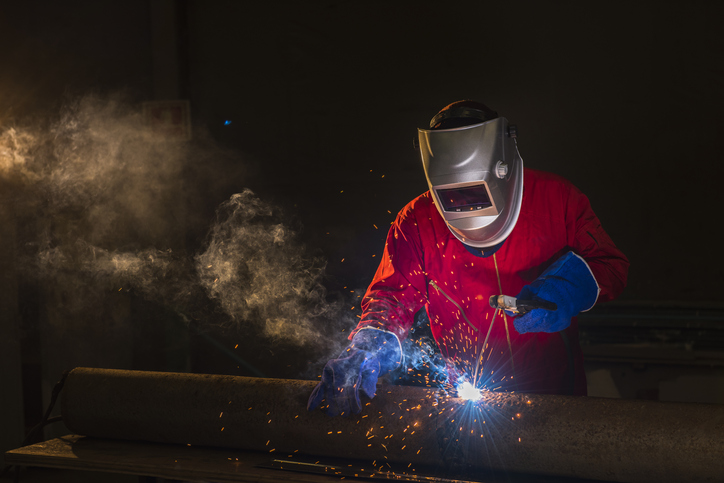
Before beginning the welding process, those in welding technician training can also ensure that their consumable connections are properly adjusted and correctly installed. Welding professionals can check for loose connections or worn weld cables to prevent a poor quality welding job or increased spatter. If the quality of these connections is confirmed beforehand, troubleshooting time can be reduced.
3. Take Advantage of Technology to Increase Arc-On Time
Advances in technology offer many advantages to welders looking to improve their arc-on time and increase efficiency. Technology is being increasingly used to improve welding power sources–making welding machines more accurate and easier to use. Some welding power sources today feature synergetic control, which allows them to automatically make changes in accordance with the operator’s adjustments. This also allows the operator to increase their arc-on time without worrying about parameters. Today, welding systems also offer a simplified machine setup–reducing the time welders spend setting up by adjusting other parameters according to the material thickness. These technologies improve accuracy, reducing spatter and post-weld cleaning to optimize arc-on time.
While these three factors contribute to increased arc-on time, those interested in entering a career in welding can also increase their arc-on time by receiving the proper training. Students at the North American Trade Schools’ (NATS) welding program benefit from hands-on training to prepare for a welding career. For welding graduate Emily Harrison, her “favourite thing about [NATS] was the knowledge of the teachers and how much practical work you were able to do.” With training from NATS, you’ll be equipped to identify ways in which arc-on time can be increased throughout your welding career.
Are you interested in taking welding courses?
The North American Trade Schools’ welding program can launch your career—learn more today!
Finishing Welding Classes? Here’s How You Can Land Your Dream Apprenticeship
December 24, 2019
Welding can be a challenging job, but also a rewarding one. Getting an apprenticeship is what helps students on their way from the classroom to a welding career, and gives them the knowledge necessary to move up to journeyman status. Students who love working in hands-on environments can thrive in this type of career, and there are several ways in which they can get the kind of training they want.
Although getting welding training at an educational institution is an essential step in the process, what you do after your schooling is even more important than what you do during it, and getting the best possible apprenticeship can help build a foundation for anyone wanting to work in a skilled trade such as welding. Here are some tips for you to land your dream welding apprenticeship.
Get the Right Welding Training, Both in and Out of the Classroom
Finding the right apprenticeship opportunity can begin with the right training program. In Canada, apprenticeship programs vary between provinces, but they often require classroom time during a span of six to eight weeks per year, as well as paid, on-site training between two and five years. For welding specifically, the combination of classroom time and on-the-job training amounts to about 6,000 hours, or around three years.
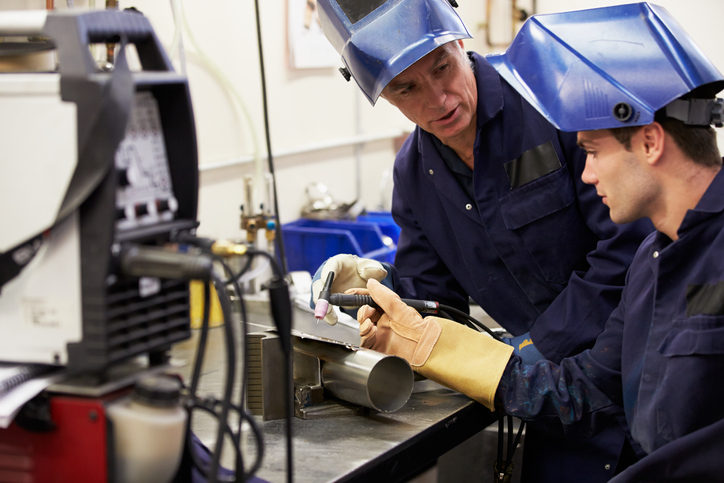
Whilst in school, students can learn various aspects of the trade through their welding courses. For example, the Structure & Pressure Vessel Welder diploma program at North American Trade Schools can teach welding students about concepts such as positional welding, blueprint reading, electrodes, consumables, and various welding processes.
How On-Site Training Can Give Students the Tools They Need for Success
Anyone hoping to have a career in welding in Ontario must become a member of the Ontario College of Trades, and must remain part of the College throughout their apprenticeship. As an apprentice on the job, students will be given instruction from a skilled worker, and the apprentice’s sponsor is tasked with signing the parts of the training standard demonstrating that the apprentice has met all necessary training requirements.
Apprenticeships can also pave the way for students to get good-paying jobs after their training. Apprentices get paid in the meantime so they can earn and learn at the same time. 90 per cent of the training for an apprenticeship takes place on the job, and the student will need to find a sponsor who can help provide them with the necessary training.
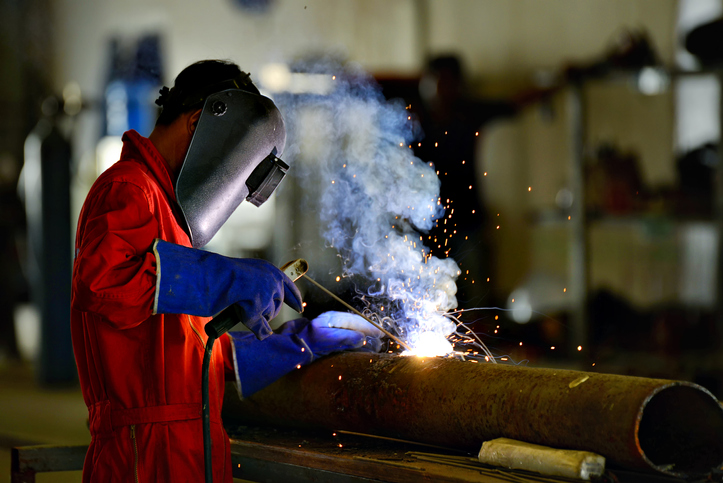
What a Student Needs to Do to Get the Most Out of Their Apprenticeship
Students should research various welding training programs, and call the schools to get more information on what each offers. Similarly, they can reach out to businesses offering apprenticeships or other welders to get tips and insights on how to get the apprenticeship they want after their welding courses. Since many training facilities are in close contact with companies hiring welders, they can work together to offer the best possible apprenticeship programs to students.
Furthermore, the length of an apprenticeship can be determined by how much prior work experience and classroom education the apprentice has under their belt. NATS’ welding diploma program also teaches students about searching for jobs, crafting resumes, and what they can expect during an interview for a job in welding to help them land an apprenticeship.
Want to attend welding classes?
Contact North American Trade Schools for more information!



